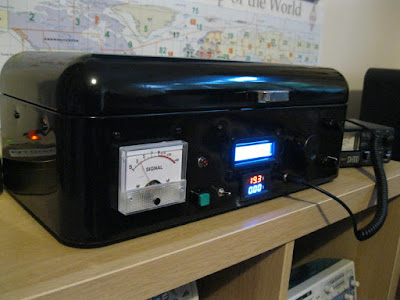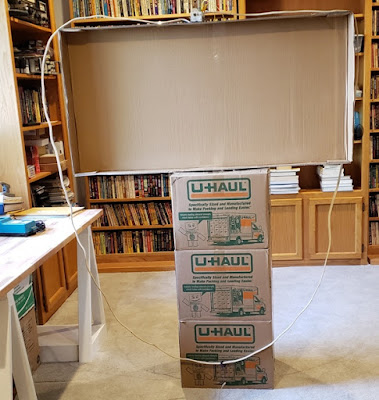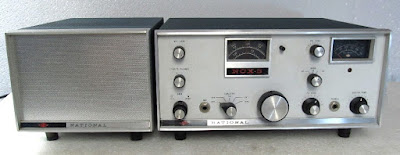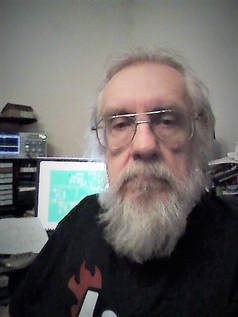Hi Bill,
Hope you are keeping well and staying safe.
Just thought I’d let you know about a homebrew project I’ve just completed. I call it the Bread Bin 80 - you’ll see why!
It is a single band (80m) SSB transceiver that puts out 25-30W of clean RF. It uses the familiar pairing of Arduino Uno + Si5351 (with 16x2 LCD screen and rotary encoder for tuning). Other than this though it is largely an analogue beast - which I thought you might like!
I made my own double balanced mixers which work really well. But the Si5351 can’t generate the 7 dBm of local oscillator signal to drive them so I then had to build a simple one transistor RF amp for each clock of the Si5351. I even went above and beyond the call of duty and home-brewed my own IF crystal ladder filter (although this was actually a kit).
The rig has a three stage IF cascade amplifier with 2 back to back JFETs in each stage + AGC and analogue S meter. There is something very satisfying about seeing the needle bob about as you are listening. I also put in a switchable analogue audio filter in front of the audio pre-amp which cuts out some of the higher frequency noise on the band.
Overall I’m really pleased with the rig. I’ve been working stations all over the UK and into continental Europe and getting some great reports. Except the one guy (who shall remain nameless) who wasn’t the least impressed that I was working him on a homebrew rig: he was only keen to point out that my antenna must be far too low to give me such an attenuated signal!!! I guess you can’t please everyone.
Anyway, I’ve done a bit of a write up and included some photos (outside and in) on my QRZ page if you are interested:
Thanks for sharing your home brewing story about your short wave receiver on YouTube. I’ve enjoyed following that and seeing it progress. Those little ‘Altoid’ tins are great aren’t they.
Thanks again for all your encouragement through the Soldersmoke podcast. I really enjoy it.
Stay In The Shack!
73 from across the Pond.
Nick
M0NTV
Nick Wood







































